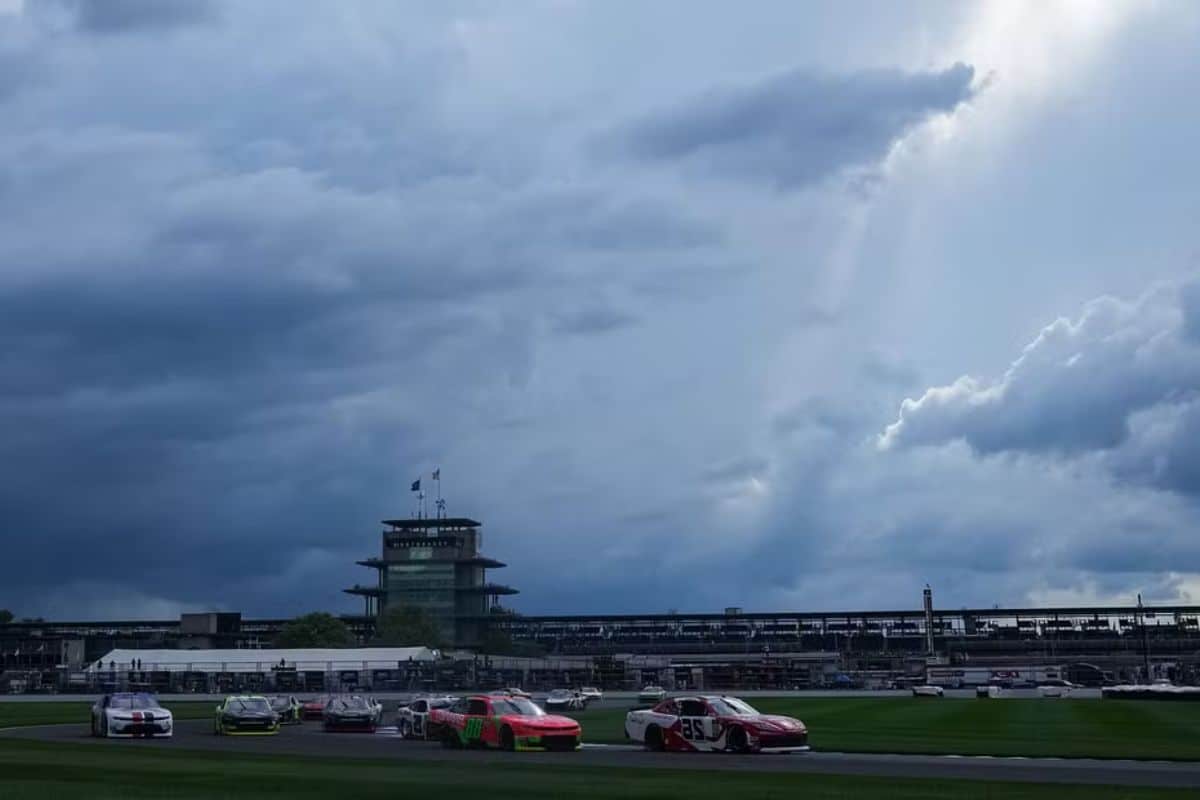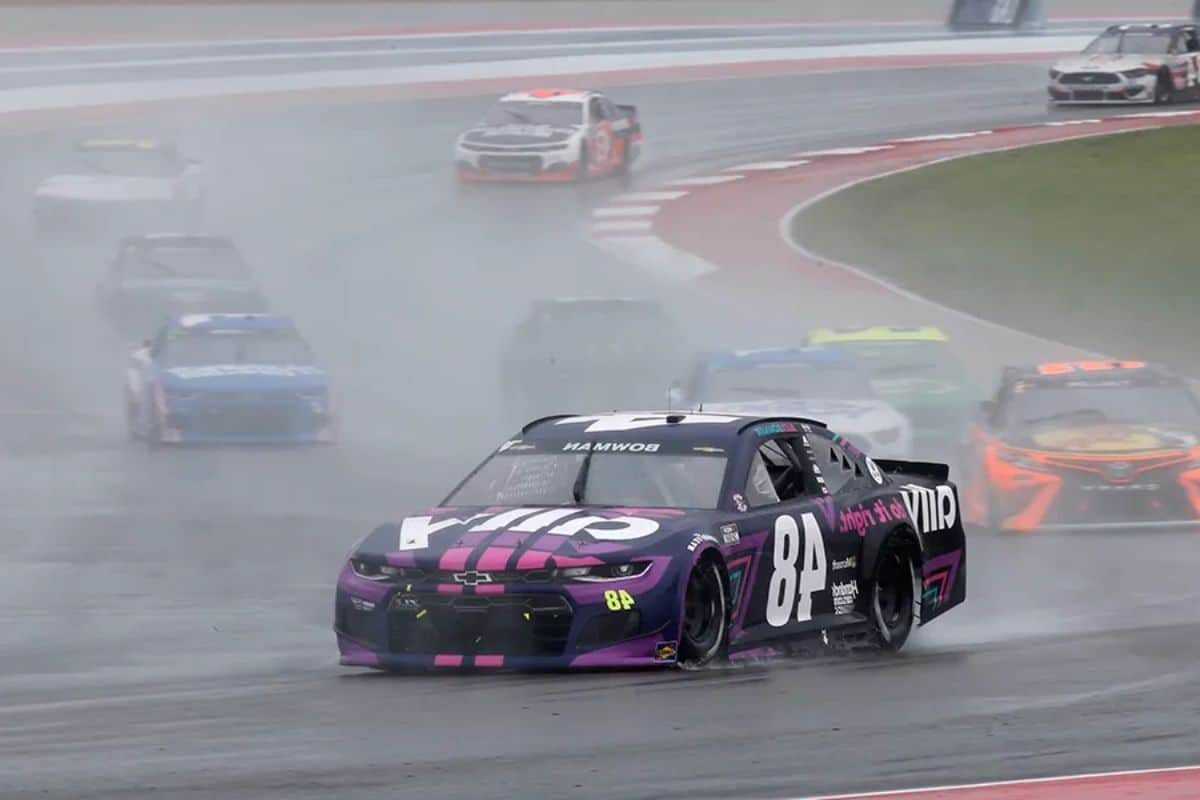As a NASCAR enthusiast, you’ve likely experienced the thrill of gearing up for a race day, only to have the skies open up and rain on your parade. But what happens to your tickets when Mother Nature decides to intervene?
NASCAR’s rainy day policy has been a topic of interest and concern for many fans. Stay tuned to uncover the ins and outs of what NASCAR offers in terms of ticket protection and rescheduling options in case the weather decides to put a damper on your race day plans.
Key Takeaways
- Ticket exchanges offered, no direct cash refunds for NASCAR events affected by weather.
- Detailed rescheduling process provided, with specific eligibility criteria and guidelines.
- Certain ticket types may not be eligible for rescheduling, based on NASCAR’s policy.
- Communication with NASCAR representatives essential for rescheduling options and exchanges.
NASCAR’s Weather Protection Program
In response to unpredictable weather conditions affecting NASCAR events, NASCAR has implemented a Weather Protection Program for ticket holders. This program aims to provide ticket holders with options in case weather interferes with the scheduled race. If rain or other adverse weather conditions cause a delay or cancellation, ticket holders have the opportunity to exchange their tickets for a future event at the same venue, subject to availability.
To be eligible for ticket exchanges under the Weather Protection Program, ticket holders must adhere to specific criteria outlined by NASCAR. It’s important to note that direct cash refunds are not offered under this program. Instead, NASCAR provides clear guidelines on how ticket exchanges can be processed, ensuring that ticket holders are aware of the terms and conditions associated with the program.

Impact of Weather on Daytona 500
Given the unpredictable nature of weather in motorsports, particularly at events like the Daytona 500, understanding the potential impact of adverse conditions is crucial for both fans and organizers. Rain can significantly affect the Daytona 500, leading to delays, postponements, or even race cancellations. In the event of rain, the race may be halted temporarily until conditions improve, causing interruptions that can impact the flow and excitement of the event. Postponing the race to another day is another possibility, requiring adjustments to schedules and logistics for both participants and spectators.
Adverse weather conditions can also affect the track surface, making it unsafe for drivers to race at high speeds. Safety is a top priority in NASCAR, and officials closely monitor weather forecasts to ensure the well-being of everyone involved. Additionally, rain can dampen the overall fan experience, affecting attendance and the festive atmosphere surrounding the Daytona 500. Understanding the potential consequences of inclement weather is essential for all stakeholders to prepare for and adapt to any changes that may arise during the race.

Rescheduling Options for Ticket-Holders
Exploring the rescheduling options available to ticket-holders provides valuable insight into navigating unforeseen circumstances at NASCAR events. When faced with the need to reschedule due to weather or other unexpected events, ticket-holders can take advantage of specific policies and procedures put in place by NASCAR. Here are some key points to consider:
- Designated Racetracks: Ticket-holders can reschedule races at specific racetracks covered under the Weather Protection Program.
- Rescheduling Process: Familiarize yourself with the detailed rescheduling process outlined by NASCAR officials to ensure a smooth transition to a new race date.
- Timeline for Contact: It’s crucial to adhere to the timeline provided for contacting officials regarding rescheduling options to secure your spot for the new race date.
- Excluded Ticket Types: Be aware that certain ticket types may not be eligible for rescheduling, so review the terms and conditions associated with your ticket purchase.
- Clear Communication: Maintain open communication with NASCAR representatives to address any concerns or questions you may have about the rescheduling process.
Changes to Daytona 500 for 2024
The enhancements to Daytona 500 for 2024 include significant modifications to the backstretch chicane, aiming to elevate both safety and performance standards for drivers and spectators alike. The repavement of the backstretch chicane area is a strategic move by NASCAR to address previous incidents and crashes that have occurred in that section of the track. By redesigning the chicane, NASCAR is not only enhancing safety measures but also looking to improve the overall racing experience for both competitors and fans.
The decision to make changes to the backstretch chicane was influenced by a thorough analysis of past events and a commitment to continuously improve the race track’s infrastructure. These modifications are expected to test the skills of drivers while providing an added layer of protection in case of high-speed maneuvers or unexpected incidents. Overall, the changes to the Daytona 500 track layout for 2024 demonstrate NASCAR’s dedication to innovation and safety within the sport.
Anticipation and Precautions for Daytona 500
With the Daytona 500 fast approaching, the anticipation and precautions surrounding the race have been heightened, particularly in light of the revamped backstretch chicane. This change has stirred excitement and apprehension among fans and drivers alike. Recent incidents during practice races have served as predictors of potential race dynamics, prompting discussions on safety measures. NASCAR’s commitment to enhancing safety based on past incidents is evident in the adjustments made to the track layout and regulations.
- Thorough Driver Briefings: Ensuring that all participants are well-informed about the track changes and potential hazards.
- Increased Safety Personnel: Boosting the presence of medical and emergency staff to respond swiftly to any incidents.
- Enhanced Vehicle Inspections: Stricter checks to guarantee that all cars meet safety standards before hitting the track.
- Driver Training Programs: Offering specialized training sessions to help drivers navigate the new chicane safely.
- Spectator Safety Protocols: Implementing measures to protect the spectators attending the event, ensuring a secure environment for all.
Conclusion of NASCAR’s Rainy Day Policy
NASCAR’s Weather Protection Program provides reassurance to ticket-holders in case of inclement weather affecting the Daytona 500.
With rescheduling options available and changes being made for the 2024 event, fans can anticipate an exciting race while taking necessary precautions for any unforeseen weather conditions.
NASCAR’s rainy day policy ensures that fans can still enjoy the race experience, rain or shine.

Our Reader’s Queries
Q. Can you refund NASCAR tickets?
A. Cash refunds are not applicable under this policy. Instead, regular grandstand tickets can be exchanged for upcoming NASCAR races at any participating venue listed. The Weather Protection Program comes into effect solely in the event of a race postponement, resulting in a rescheduled date different from the initially planned one.
Q. What happens if Daytona 500 gets rained out?
A. Amidst a rain delay of the NASCAR Sprint Cup Series Daytona 500 on February 23, 2014, cars line pit road at Daytona International Speedway in Daytona Beach, Florida. In the event of an official postponement of the Daytona 500, fans possess the flexibility to utilize their tickets at any sanctioned NASCAR event, providing an alternative opportunity to experience the thrilling racing action.
Q. Are NASCAR Chicago tickets refundable?
A. No, cash refunds for tickets are not available under the current policy. It is important to note that alternative options, such as exchanges for future NASCAR races at participating venues, are provided instead. This policy stands firm, ensuring clarity regarding refund procedures for ticket holders.
Q. Does Daytona 500 run in the rain?
A. NASCAR does not race in the rain or damp conditions at Daytona. The tires used in NASCAR do not have tread to avoid excessive wear and heat generation on the 2.5-mile track. In the presence of any amount of rain at Daytona, the race is placed under caution as a precautionary measure. This approach prioritizes safety and maintains optimal track conditions for the drivers.
ALSO READ: Daytona 500 Weather Chaos: Will Rain Steal the Show?

